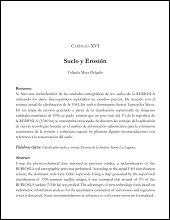LA PESQUERÍA DEL LANGOSTINO ARGENTINO Pleoticus muelleri (CRUSTACEA: PENAEIDAE) EN PATAGONIA, ¿UN ÚNICO STOCK?
ARGENTINE SHRIMP FISHERY Pleoticus muelleri (CRUSTACEA: PENAEIDAE) IN PATAGONIA, IS IT A SINGLE STOCK?
Resumen
"Argentine shrimp fishery in Patagonia was managed since its beginning as a single stock. The fishery research done on this issue considered that the concept of stock unity and cohort monitoring could not be applied to Argentine shrimp fishery. The annual landings of shrimp presented significant variations in number, which could not been explained in an effective manner. This paper analyses the feasibility of recognizing different subunits of stock. The biological information available enables the recognition of three core areas of reproduction and growth: Rawson’s coastline area (43° 30’ S), and the northern (45° S) and southern (47° S) areas of the San Jorge Gulf. The available results of mark-recapture experiments indicate that a fraction of the population is born and develops in the southern area, remains in this area and will probably make a breeding contribution to the next generation. In the last decade, in the year 2001 when annual catches were the highest, the concentration of fishing activity in Rawson’s coastal area was found to be characterized by maximum yields and sizes. Nevertheless, these evidences are not sufficient and require other methods in order to differentiate the three proposed stock subunits. A population genetic analysis using molecular markers is proposed as a robust methodology, which would assess the genetic structure of the population and identify the existence of mixed stocks in the geographic area where the fishery is developed." "La pesquería de langostino argentino en Patagonia estuvo manejada desde su inicio como un único stock. Las investigaciones pesqueras realizadas consideraron que el concepto de unidad de stock y el seguimiento de cohorte, no es aplicable al manejo de la pesquería del langostino argentino. Los volúmenes anuales de captura de langostino presentaron importantes variaciones en sus números, que no han podido ser explicadas de modo efectivo. En este trabajo se analiza la factibilidad de reconocer diferentes subunidades de stock. La información biológica disponible, permite reconocer tres áreas núcleo de reproducción y crecimiento: litoral de Rawson (43° 30’ S), norte del golfo San Jorge (45° S) y sur del golfo San Jorge (47° S). Los resultados disponibles de experiencias de marcado y recaptura, indican que una fracción de la población que nace y se desarrolla en la zona sur del golfo, permanece en esta zona y posiblemente efectúe allí su aporte reproductivo a la siguiente generación. Considerando la última década, en 2001 cuando las capturas anuales fueron máximas, se observó la concentración de la actividad de pesca en la zona litoral de Rawson, caracterizada por máximos rendimientos y tallas. Estas evidencias no resultan suficientes, y se requiere de otros métodos que permitan diferenciar las tres subunidades de stock propuestas. Se propone el análisis genético poblacional mediante marcadores moleculares como una metodología robusta, esto permitiría evaluar la estructura genética de la población, e identificar la existencia de stocks mezclados en el área geográfica donde se desarrolla la pesquería."
Colecciones
Ítems relacionados
Mostrando ítems relacionados por Título, autor o materia.
-
PROMOCIÓN DEL PERIFITON PARA EL CULTIVO DE CAMARÓN BLANCO: HACIA UNA ACUICULTURA ECOLÓGICA
DOMENICO VOLTOLINA LOBINA; JUAN MANUEL AUDELO NARANJO; MARIA DEL ROSARIO PACHECO MARGES -
Suelo y Erosión
YOLANDA LOURDES MAYA DELGADO

